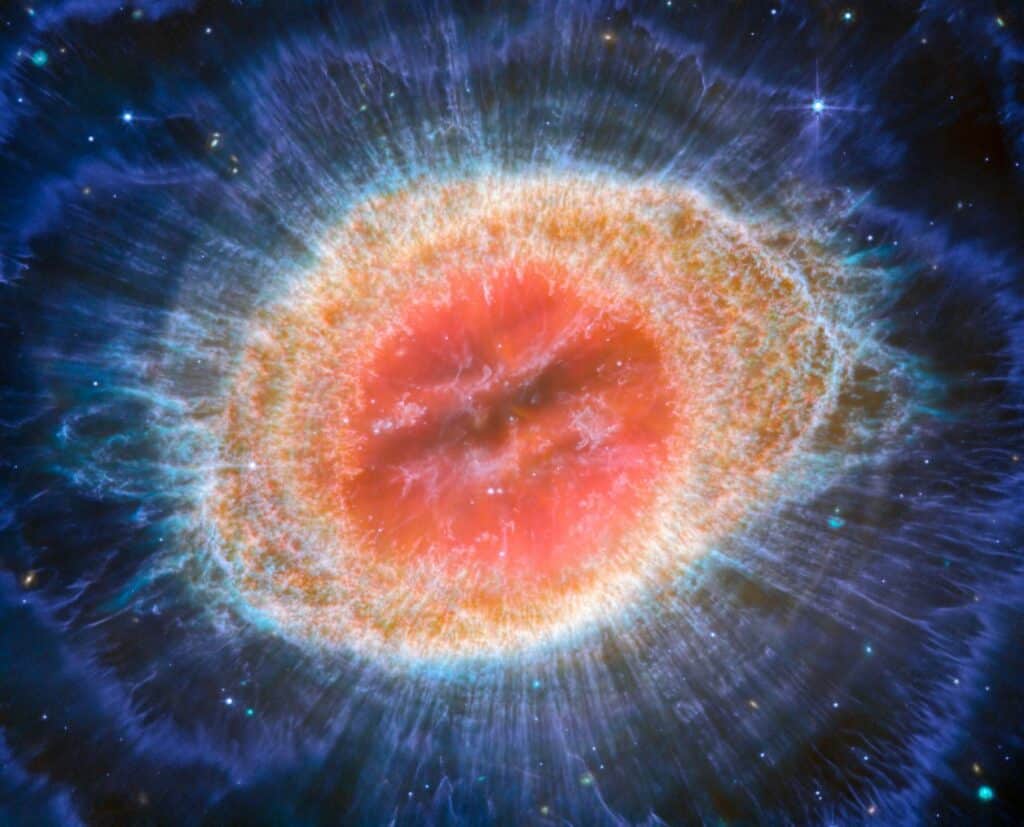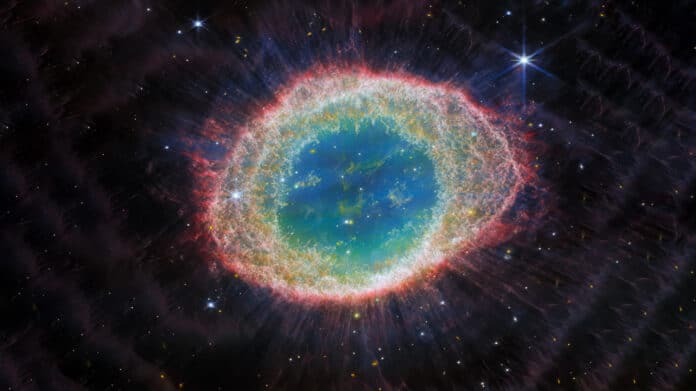Ring Nebula is one of the best-known examples of a planetary nebula. Recent images of the Ring Nebula obtained by NASA’s James Webb Space Telescope reveal intricate structures of the final stages of a dying star.
Cardiff University’s Roger Wesson provides more information about this stage of a Sun-like star‘s stellar lifespan and discusses how Webb’s observations have provided invaluable insights into the birth and evolution of these objects, suggesting a crucial role for binary companions.
Solving some of the mysteries surrounding planetary nebulae is possible by focusing on the Ring Nebula. It is bright and around 2,200 light-years away.
The team of scientists, named ESSENcE (Evolved Stars and their Nebulae in the JWST Era), realized that Webb’s observations would provide invaluable insights since the Ring Nebula fits nicely in the field of view of Webb’s NIRCam (Near-Infrared Camera) and MIRI (Mid-Infrared Instrument) instruments.
Wesson said, “It allows us to study it in unprecedented spatial detail. Our proposal to observe it was accepted and Webb captured images of the Ring Nebula just a few weeks after science operations started on July 12, 2022.”
Scientists were extremely surprised after seeing the images- especially the amount of detail in them. Each of the 20,000 or so dense molecular hydrogen gas clumps that make up the brilliant ring that gives the nebula its name is roughly the mass of the Earth.
Polycyclic aromatic hydrocarbons, or PAHs, are complex carbon-bearing molecules not anticipated to form in the Ring Nebula. Still, they have a small band of emission within the ring. Strange “spikes” pointing out from the center star that is noticeable in the infrared but faintly visible in Hubble Space Telescope photos are visible outside the bright ring.

The team noted, “We think these could be due to molecules that can form in the shadows of the densest parts of the ring, where they are shielded from the direct, intense radiation from the hot central star.”
“Our MIRI images provided us with the sharpest and clearest view yet of the faint molecular halo outside the bright ring. A surprising revelation was the presence of up to ten regularly-spaced, concentric features within this faint halo. These arcs must have formed about every 280 years as the central star was shedding its outer layers.”
“When a single star evolves into a planetary nebula, there is no process that we know of that has that time period. Instead, these rings suggest that there must be a companion star in the system, orbiting about as far away from the central star as Pluto does from our Sun. As the dying star threw off its atmosphere, the companion star shaped and sculpted the outflow. No previous telescope had the sensitivity and the spatial resolution to uncover this subtle effect.”
